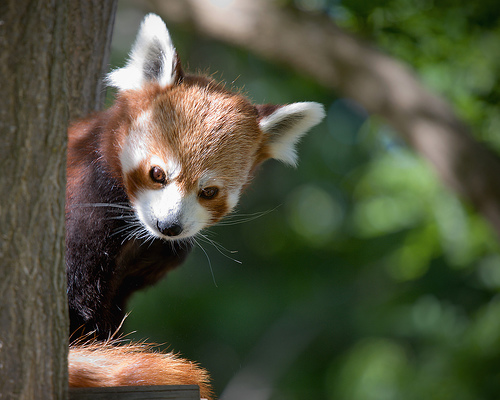May 25th, 2007
How Slow Can You Shoot Handheld?
One of the quickest ways to ruin a good shot is to use too slow of a shutter speed in relation to your lens’ focal length. A fast shutter speed is not only useful in capturing action shots, but it also will eliminate camera shake blur in your photo. We all love a long lens, but with that length comes the potential for blurry shots. When you are using a telephoto lens, every little bit of movement of the camera gets magnified many times over in the viewfinder.
Back in my 35mm film SLR days, I used the simple rule of placing “1/” over my lens’ focal length to determine my slowest shutter speed to safely shoot handheld. For example, if I was using a 200mm lens, the slowest I would set my shutter speed to is 1/200 second. But now that we are in the digital age with cameras that have “crop factors” of 1.5 or 1.6, we have to amend this rule a bit. If you are shooting with one of these cameras, simply take your lens’ focal length and multiply it by 1.5 and then convert it to a shutter speed. So now that 200mm lens needs a shutter speed of 1/300 of a second or faster to safely shoot handheld.
Over time, many photographers develop a steady hold and can amend their handheld shutter speeds to allow for less shake of the camera. I find now that I can safely handhold a shot at one to two f/ stops longer of a shutter speed than this equation recommends. Today’s image of a Red Panda taken at Utah’s Hogle Zoo is an example. I handheld this shot with a shutter speed of 1/50 second and a focal length of 280mm. While the image is not as “tack sharp” as I would like, it is definitely usable.
Like most rules in photography, this one is not set in stone. Feel free to experiment with combinations of shutter speed and lens length. I believe that it is better to have a slightly blurry photo (due to camera shake) than to not have taken one at all.
Canon 5D, Canon 70-200 f/4L lens with 1.4x extender – 1/50 second, f/5.6, ISO 160
Labels: animal, photography, tutorial






